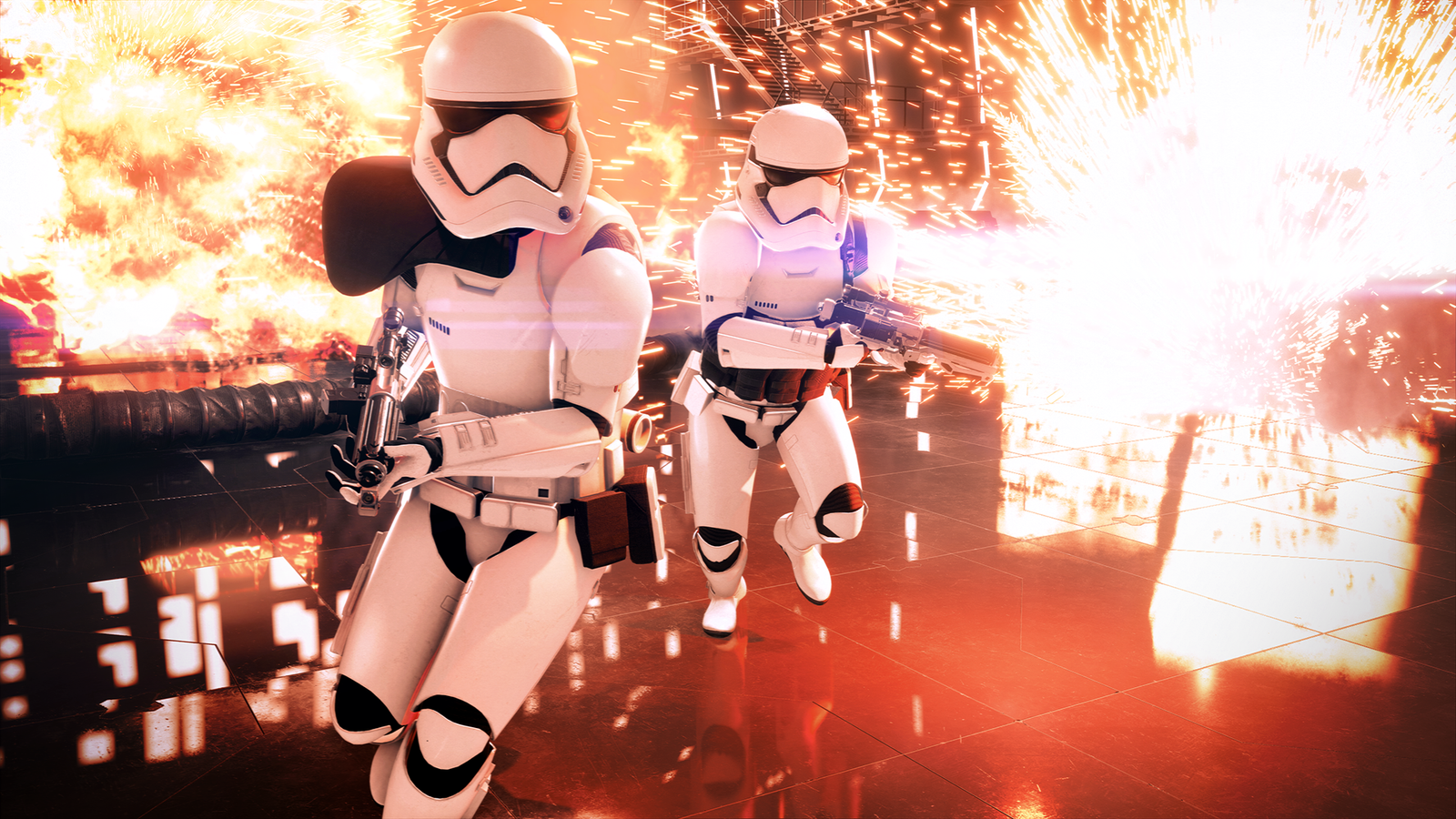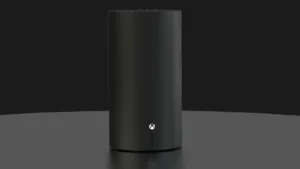Best Gaming Monitors for 2023: Including Top Gaming Monitor for Xbox Series X
Estimated reading time: 19 minutes
If you’re looking for one of the best gaming monitor, the first thing we gotta say is try out the LG UltraGear 34GP950G. It’s our top gaming monitor for a reason, but even if it’s not exactly your speed, there are a ton of great gaming monitors out there. Whether you’re looking for pure fidelity or something that’ll help you top the leaderboards in Call Of Duty Modern Warfare 3.
TL;DR – These are the Best Gaming Monitors:
LG UltraGear 34GP950G-BHP OMEN 27qRedMagic 4K Gaming MonitorHP Omen 27qsSamsung Odyssey G7Asus TUF Gaming VG258QMMSI MPG Artymis 273CQRX-QDSamsung Odyssey Neo G9LG UltraGear 48GQ900Cooler Master Tempest GP27Q
Whether you’re looking for a 4K gaming monitor with a sharp picture, a 240Hz gaming monitor delivering a buttery smooth experience, or a budget gaming monitor after splurging on a gaming PC, we’ve found options that’ll cater to your gaming style and needs. There is an excess of gaming monitors on the market, which is both a boon and a curse. But luckily, we’re experts in this field and have reviewed or witnessed the majority in action, bringing you the ten best – and click here to see them in the UK.
Looking for discounts? Check out the best gaming monitor deals happening right now.
The Best Gaming Monitors 2023
1. LG UltraGear 34GP950G-B
Best Gaming Monitor
Screen size: 34″ 3800R | Aspect ratio: 21:9 | Resolution: 3,440 x 1,440 | Panel type: Nano IPS Nvidia G-Sync Ultimate | HDR compatibility: DisplayHDR 600 | Brightness: 600cd/m2 | Refresh rate: 144Hz (180Hz OC) | Response time: 1ms | Inputs: 1 x HDMI 2.0, 1 x DisplayPort 1.4
You’ll find greatness around every corner on this monitor. Its big, 34-inch display provides a spacious viewing area for your games with a cinematic, 21:9 aspect ratio. It stays sharp at 3,440 x 1,440 and it keeps your visuals clear with a fast response time and Nvidia G-Sync Ultimate, so you won’t suffer from screen tearing, stutter, coronas, or ghosting. That also means it’s one of the best G-Sync monitors and is going to keep you immersed in the game no matter what you’re playing.
LG has used a Nano IPS display on this model that comes with impactful color with a 10-bit color depth, and those visuals will really pop thanks to the 600-nit peak brightness and HDR capabilities. It’s enough for the monitor to almost completely cover the expansive DCI-P3 color space. These specs surpass most monitors on the market, so you’re going to be blown away by the picture. And, all of that visual quality can cruise at 144Hz, or you can enable the overclocked mode to boost it up to 180Hz. You’ll be getting some super-smooth gameplay. There’s even content-responsive bias lighting built into the monitor with an RGB light ring on the back. This monitor truly means business, if your business is gaming.
2. HP OMEN 27q
Best Budget Gaming Monitor
Screen size: 27″ | Aspect ratio: 16:9 | Resolution: 2,560 x 1,440 | Panel type: IPS FreeSync Premium | Brightness: 400cd/m2 | Refresh rate: 165Hz | Response time: 1ms | Inputs: 2 x HDMI, 1 x DisplayPort
For under $300, the HP OMEN 27q offers some stellar specs, starting with a 1440p display delivering a 165Hz refresh rate ready for fast-paced games. Luckily many modern graphics cards can drive those high frame rates in 1440p. Of course, you can always drop to 1080p if your PC can’t keep up. Then when you add a 1ms response time and FreeSync Premium, you’ll enjoy ample visual and motion fidelity for silky smooth frames in even your fastest-paced games.
Beyond gaming, the HP OMEN 27q delivers rich and vibrant visuals on a 27-inch screen that pairs well with its crisp 1440p resolution. A 400-nit peak brightness ensures easy viewing of the monitor in most spaces. You even get HDR support, albeit basic, while its color performance is decent. However, similar to other IPS panels, the contrast ratio isn’t the best out there, but for the price, that flaw can be forgiven.
3. RedMagic 4K Gaming Monitor
Best 4K Gaming Monitor
Screen size: 27″ | Aspect ratio: 16:9 | Resolution: 3,840 x 2,160 | Panel type: LCD IPS G-Sync, FreeSync Compatible | HDR compatibility: DisplayHDR 1000 | Brightness: 650cd/m2 | Refresh rate: 160Hz | Response time: 1ms | Inputs: 2 x HDMI 2.1, 1 x DisplayPort 1.4, 1 x USB-C (DisplayPort mode), 2 x USB-A, 1 x USB-B
The RedMagic 4K Gaming Monitor delivers a sharp, detailed picture with superb color accuracy on perfectly sized 27-inch screen. Its IPS panel with Mini-LEDs has an impressive 1,152 local dimming zones for a high contrast ratio ensuring punchy highlights and plenty of depth in dark, shadowy scenes, though there’s some slight blooming around bright objects. With HDR turned on, you’re viewing experience will be amplified further with vivider images that are on par with many OLED monitors.
RedMagic didn’t skimp on gaming features, including a DisplayPort 1.4 and USB-C with a DisplayPort mode, which both offer a 160Hz refresh rate in 4K. Two additional HDMI 2.1 ports max out at 120Hz and are perfect for hooking up a PS5 or Xbox Series X/S. Nvidia G-Sync and AMD FreeSync are compatible, so you’re graphics card and display play nicely for better motion handling at those high refresh rates.
4. HP Omen 27qs
Best Esports Gaming Monitor
Screen size: 27″ | Aspect ratio: 16:9 | Resolution: 2,560 x 1,440 | Panel type: IPS FreeSync, G-Sync Compatible | Brightness: 400cd/m2 | Refresh rate: 240Hz | Response time: 1ms Inputs: 2 x HDMI 2.0, 1 x DisplayPort 1.4, 2 x USB-A, 1 x USB-B, 1 x Audio
In esports, speed is key, and the HP Omen 27qs has it on lock with a 240Hz refresh rate that’ll let you cruise through maps while catching all the visual detail you need to get the drop on your opponents. It hits those high frames at a sharp 1140p resolution, and when your screen and GPU struggle to keep a consistent frame rate, FreeSync Premium Pro and G-Sync compatibility will step in, ensuring motion clarity.
This 27-inch monitor uses a fast IPS panel that produces a bright and colorful picture. It’s even HDR certified, though that shouldn’t be the reason you purchase this monitor. The mediocre contrast ratio and hazy IPS glow also mean it’s not ideal for darker scenes. But given the price tag, these minor flaws can be forgiven.
5. Samsung Odyssey G7
Best 1440p Gaming Monitor
Screen size: 27″ 1000R | Aspect ratio: 16:9 | Resolution: 2,560 x 1,440 | Panel type: VA QLED G-Sync, FreeSync Premium Pro | Brightness: 600cd/m2 | Refresh rate: 240Hz | Response time: 1ms | Inputs: 1 x HDMI 2.0, 2 x DisplayPort 1.4
If you don’t think 4K is all it’s cracked up to be, then there’s plenty to be gained by sticking with old faithful: 1440p. This resolution will be able to run your games better. And the Samsung Odyssey G7 offers up a solid 1440p display with a fairly tight curve. That’s a good start for gaming, but this monitor is ready to take as much graphical horsepower as you can throw at it thanks to a super-fast, 240Hz refresh rate. Those are the kinds of speeds usually reserved for 1080p monitors.
With the Odyssey G7, you’ll get those speeds alongside a 600-nit peak brightness and 10-bit color depth. So, not only will you be able to see a ton of frames, but each frame can look exceptional. And, don’t worry about tearing, as this monitor supports both G-Sync and FreeSync Premium Pro. It’s ready to take on whatever you throw at it.
6. Asus TUF Gaming VG258QM
Best 1080p Gaming Monitor
Screen size: 24.5″ | Aspect ratio: 16:9 | Resolution: 1,920 x 1,080 | Panel type: TN G-Sync compatible | Brightness: 400cd/m2 | Refresh rate: 280Hz | Response time: 0.5ms (GtG) | Inputs: 2 x HDMI 2.0, 1 x DisplayPort 1.2
People might be clamoring over 4K displays, and 1440p has a home in the hearts of many gamers trying to balance visual quality with value, but 1080p monitors still have their place. The Asus TUF Gaming VG258QM is a prime example where FHD fits in because, for under $300, you get a screen that delivers an overclockable 280Hz refresh rate, 0.5ms response time, and low input lag, which will see your games run as smooth as hot butter. You even get G-Sync compatibility, ensuring your monitor and graphics card play nicely with each other.
The Asus TUF Gaming VG258QM stretches its 1080p picture across a 24.5-inch TN panel, and at 400 nits, it’s plenty bright for easy viewing. The contrast ratio isn’t the best, but a shadow boost feature while gaming helps to expose enemies lurking in the shadows. Some other quality-of-life boxes can get ticked off, too, with a height-adjustable, pivoting stand, two HDMI ports, and one DisplayPort for ample connectivity opportunities
7. MSI MPG Artymis 273CQRX-QD
Best Curved Gaming Monitor
Screen size: 27″ 1000R | Aspect ratio: 16:9 | Resolution: 2,560 x 1,440 | Panel type: VA FreeSync Premium | HDR compatibility: DisplayHDR 400 | Brightness: 400cd/m2 | Refresh rate: 240Hz | Response time: 1ms | Inputs: 1 x DisplayPort 1.2a, 2 x HDMI 2.0, 1 x USB-C, 1 x Headphone
Curved monitors sometimes give you leg up against competitors, as the screen pairs perfectly with your field of vision. Our favorite happens to be the MSI MPG Artymis 273CQRX-QD, a curved monitor from MSI that features quantum dot screen technology. Simply put, this monitor is going to be more color-accurate and immersive than any other gaming monitor out there, especially in its price range.
This MSI Artymis gaming monitor features a 1000R curvature and a 1440p VA panel that offers incredibly deep blacks. It also features FreeSync, which is perfect if you’re using an AMD graphics card like the AMD Radeon RX 7800 XT. This is easily the best curved gaming monitor you can get, especially under a thousand bucks.
8. Samsung Odyssey Neo G9
Best Super Ultrawide Gaming Monitor
Screen size: 48.8″ 1000R | Aspect ratio: 32:9 | Resolution: 5,120 x 1,440 | Panel type: Mini LED QLED VA, FreeSync Premium Pro, G-Sync compatible | HDR compatibility: HDR10, HDR10+, Quantum HDR 2000 | Brightness: 2,000cd/m2 | Refresh rate: 240Hz | Response time: 1ms | Inputs: 2 x HDMI 2.1, 1 x DisplayPort 1.4
With the Samsung Odyssey Neo G9, you get a super ultrawide display, and it’s not just “super” because of how wide it is, but also because of how powerful it is. Samsung delivers an insanely stretched-out 48.8-inch display panel that’s effectively two 1440p monitors side by side without a gap in between. The display has an incredibly tight 1000R curvature that keeps it nice and close to your eyes from one side to the other.
Samsung has stuffed this thing to the gills, too. The display is lit with intense Mini LED backlights that deliver a 2,000-nit peak brightness — something you’ll be hard-pressed to find on just about any other screen. That brightness pairs with the strong contrast and broad color of the QLED panel in front of those Mini LEDs. You can take all the gorgeous gaming visuals this monitor can display for a high-speed cruise thanks to the monitor’s 240Hz refresh rate. And, since 5,120 x 1,440 won’t be the easiest resolution for any computer to drive, FreeSync Premium Pro and G-Sync compatibility will help keep the visuals neat and tidy.
9. LG UltraGear 48GQ900
Best Gaming Monitor for the Xbox Series X/S and PS5
Screen size: 47.5″ | Aspect ratio: 16:9 | Resolution: 3,840 x 2,160 | Panel type: OLED FreeSync Premium, G-Sync Compatible | HDR: HDR 10 | Brightness: 135cd/m2(typ) | Refresh rate: 120Hz (138Hz overclockable) | Response time: 0.1ms | Inputs: 3 x HDMI 2.1, 1 x DisplayPort 1.4
If you’re looking to use your new consoles on a monitor rather than a gaming TV, you’ll want to do it with the LG UltraGear 48GQ900. This monitor brings some high-end gaming chops, like VRR, a 0.1ms response, and a 120Hz refresh rate (overclockable to 138Hz) for some of the smoothest, blur-free action out there. And you won’t need to swap around cables when switching between PS5, Xbox Series X/S, or a gaming PC thanks to its inclusion of three HDMI 2.1 ports and a DisplayPort connection.
The LG UltraGear 48GQ900 offers a massive 47.5-inch OLED panel, so you’ll enjoy all the benefits of true blacks, infinite contrast, and eye-popping color for deep immersion in all of the action. The only area where this display struggles is brightness in certain scenes, but it’s still a brilliant display to enjoy 4K gaming on your next-gen console.
10. Cooler Master Tempest GP27Q
Best FreeSync Gaming Monitor
Screen size: 27″ | Aspect ratio: 16:9 | Resolution: 2,560 x 1,440 | Panel type: IPS FreeSync Premium, G-Sync Compatible | HDR compatibility: HDR 1000 | Brightness: 600cd/m2 | Refresh rate: 165Hz | Response time: 1ms | Inputs: 2 x HDMI 2.0, 1 x DisplayPort 1.2
The Cooler Master Tempest GP27Q is the perfect companion to your AMD graphics, as it’s packing FreeSync Premium to ensure your monitor and GPU are playing nicely. Given how hard it’ll be to run games at the speedy 165Hz/1440p that this monitor is capable of, FreeSync Premium comes into play to keep each frame intact. For more insurance that you’ll enjoy some butter-smooth gameplay, there’s also a 1ms response time.
Using an IPS panel with mini LED technology, the Cooler Master Tempest GP27Q delivers a wild contrast ratio and impressive HDR performance thanks to its 576 local dimming zones. You’ll be immersed in deep blacks and vibrant color with its wide color gamut and 10-bit color support. This FreeSync monitor even pumps out brightness hitting 1200 nits in HDR mode.
Where to Get the Best Gaming Monitor in the UK
We’ve mentioned several brilliant screens on this list, with up to 14 different options to choose from. These range from the most affordable all the way up until the juggernaut sets for those who love to take in every single detail. Thankfully, all of the displays mentioned can be found in UK retailers, and we’ve just so happened to track them down to save you the trouble of a time-consuming Google search.
What to look for in a gaming monitor
Below we go over the three essential things you should consider including screen size, resolution, and aspect ratio. We’ve also briefly explained a few of the more technical aspects of computer display such as panel types, refresh rate, and the variable refresh rate technologies available today.
Screen size: “How big?” Will probably be the first thing you’ll ask yourself, and the answer really comes down to your unique situation. Are you in a tiny dorm with barely any room or are you looking to get a 43-inch gaming monitor to replace your TV?
How you answer that question will ultimately determine the display size you need. But, if you’re looking for some basic guidelines on screen sizes, 24- to 27-inch displays will satisfy most gamers. Those looking for a more immersive experience might be interested in a 32-inch or larger screen. As with most things, gaming monitors will usually become more expensive as you go up in size, so think with your budget as much as your ambition.
Aspect ratio: The aspect ratio of your monitor is closely related to its size because it determines which form factor your display will have. The majority of monitors fall into the widescreen category with their 16:9 aspect ratio. Ultrawide displays have been rising in popularity recently, and these screens often feature the 21:9 aspect ratio you would typically see at the movie theater. If you can believe it, modern displays have only been getting even wider and there’s a growing crop of 32:9 displays as well.
Screen resolution: This determines how sharp your gaming monitor will be and, for the most part, there are three choices: Full HD (1,920 x 1,080), Quad HD (2,560 x 1,440), and Ultra HD or 4K (3,840 x 2,160). Like screen size, as the numbers go up so does the price, plus they’ll require a higher-end graphics card if you hope to maintain a high frame rate.
Panel type: Although most monitors might look the same on the surface, there are a few different panel types that offer specific benefits and shortcomings. Twisted Nematic (TN) panels are the most basic and common panel you’ll come across as they deliver the fastest response times of 1ms often at the cost of duller colors, grayer black levels, and poor viewing angles.
In-Plane Switching (IPS) is the next most prevalent type of display and it’s basically the opposite of a TN panel. Rather than focusing on speed, IPS panels are known for rendering excellent colors and contrast while offering wider viewing angles in exchange for slightly slower response time, usually hovering around 3-5ms.
Lastly, Vertical Alignment (VA) panels are becoming increasingly common and they essentially split the difference between TN and IPS panels. They offer great image quality with decently quick response times. VA panels aren’t perfect, though, as sometimes fast-moving objects will give off ghosting effects due to the slower response time.
If you want a responsive experience, it’s best to pick one with a fast response time, which is a measure of how quickly a pixel can change from the brightest to the darkest (white to black) color.
Response time: Competitive shooters and MoBAs demand the quickest response times, so it’s best to play these types of games on monitors that offer a 1ms response time. Playing Indie games and most single-player experiences shouldn’t be a problem on a display with a response time between 3-5ms – and it’s pretty much impossible to find a monitor that is slower than this.
Refresh rate: This is another important measure of how responsive the display is, and it defines how often your screen can display a completely new image — so it essentially dictates your frame rate. 60Hz is the standard refresh rate for silky smooth PC gaming, but there’s a long list of options that feature even higher refresh rates of 120Hz, 144Hz, 240Hz, 360Hz and even up to 500Hz.
Basically, the higher the refresh rates the more times the image on your screen will update every second, resulting in a smoother gameplay experience. Beyond the visual appeal of high refresh rate displays, they can be useful for gamers who need to keep up with the rapid movements competitive games demand. Generally, you’ll be at an advantage if you see your opponents and react before they do.
G-Sync vs FreeSync: Variable refresh rate (VRR) technology is a fairly recent invention and it ensures you have a consistently smooth and responsive gaming experience. Currently, there are two flavors of VRR, Nvidia G-Sync and AMD FreeSync, and they’ll require a prerequisite that you own a compatible graphics card from the corresponding brand. Nvidia GeForce cards do allow you to enable VRR on any FreeSync monitor, but your results will vary.
At the most basic level, VRR syncs your monitor’s refresh rate with the number of frames your GPU outputs. This prevents screen tearing caused by the graphics card feeding your display multiple frames while it’s is in the middle of refreshing its picture. If your graphics card is running your game at 60 fps, you’ll see your monitor refresh at exactly 60Hz with wonderfully smooth gameplay.
Our only other piece of advice when buying a gaming monitor is to make sure your video card can handle the resolution and refresh rate of the display you’re considering. It would be a waste of money to buy a 4K monitor when your GPU can only handle 1080p gaming.
Gaming Monitor vs. Gaming TV
Choosing a display to game depends on personal preference and how you want to play. Below we discuss gaming monitors vs TVs.
Gaming monitors are often much smaller than a TV and usually live on a gaming desk with you sitting just a couple of feet away. Most have ergonomic stands, letting you adjust the height, swivel, and tilt to find a good viewing angle which also makes it easier to hook up multiple monitors.
TVs come in much larger sizes and rest on a TV stand or mounted on a wall, ready to be viewed from a distance. Most TVs offer a fairly basic stand with limited to no adjustments, making them much harder to see when they’re on a desk.
Both monitors and TVs have their own advantages when it comes to image quality. Mid-range and high-end TVs excel in brightness, contrast, and color thanks to their OLED panels or Mini-LED backlights. That also lets them take on HDR content better than many monitors. However, some 4K monitors can keep up and often deliver even more sharpness.
As for gaming performance, you want a display with a low input lag, high refresh rate, and soild pixel response times. Generally, this is where monitors go a notch above TVs.
The majority of monitors offer a super low input lag, often adding just a few milliseconds delay between the input and the input appearing on screen. TVs are a hit or miss, so it’s important to do your research before purchasing.
As for refresh rate, even budget monitors hit high frame rates, though you sacrifice resolution. At this point, you’ll be hard-pressed to find a gaming monitor with a refresh rate below 120Hz, with some going up to 360Hz or even 500Hz. There’s also probably some type of VRR baked in for the smoothest frames possible. Gaming TVs still lag behind, with most 4K options landing on either 60Hz or 120Hz refresh rates, while adaptive sync technology is sometimes included.
Then there’s pixel response time, which is essential to avoid ghosting on screen. Both monitors and TVs perform similarly, though OLED panels often seen in TVs have an almost instantaneous response time.
When purchasing a display, the price comes into play, and gaming monitors often provide better value. You can find monitors for $200 that still offer a wealth of gaming features, including a high refresh rate and adaptive sync. TVs around that same price are more than likely going to lack any type of gaming features. Even budget gaming TVs will set you back a good chunk of change with still limited gaming features.
Kevin Lee is IGN’s Hardware and Roundups Editor. Follow him on Twitter @baggingspam.
Danielle Abraham is a freelance writer and unpaid music historian.









